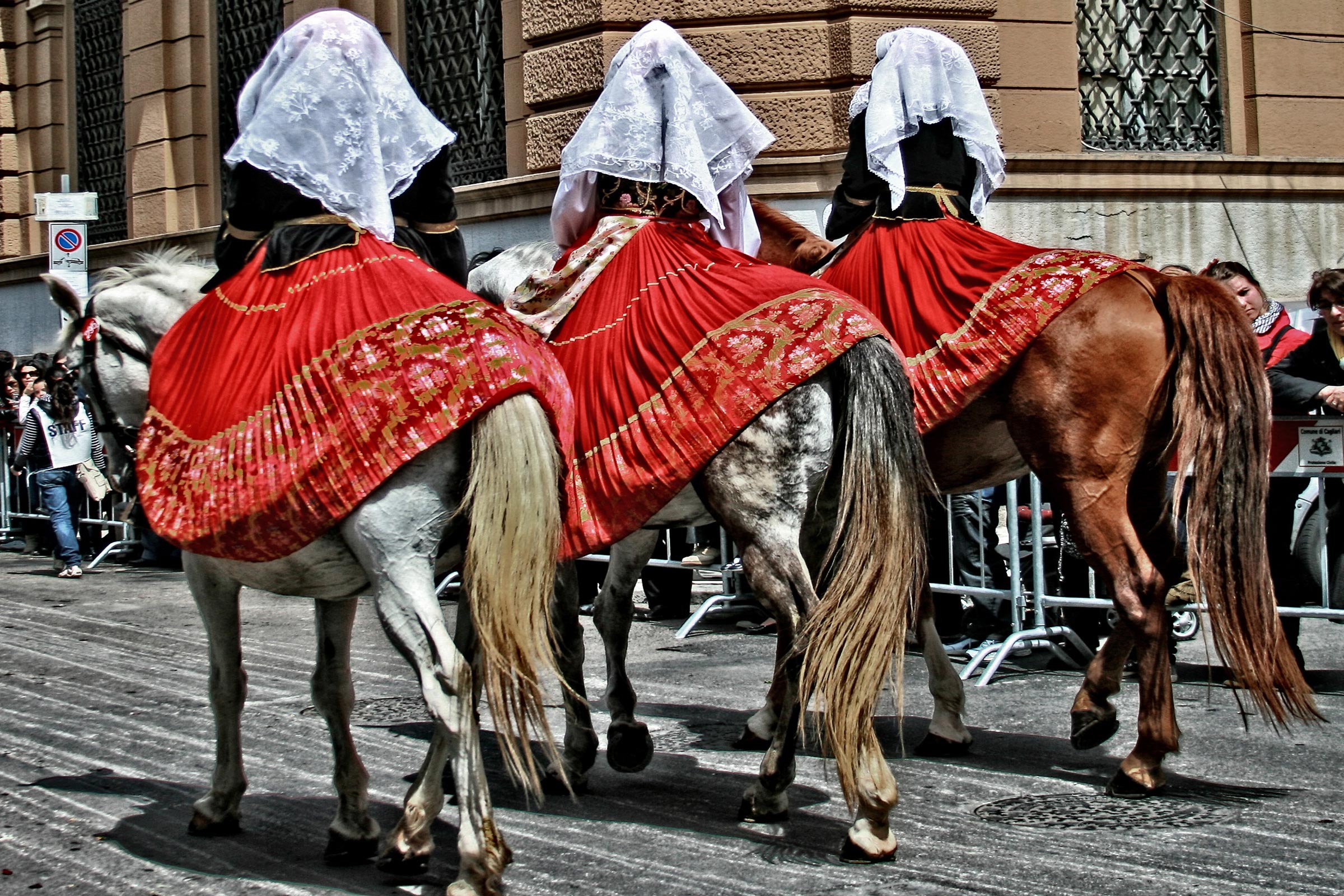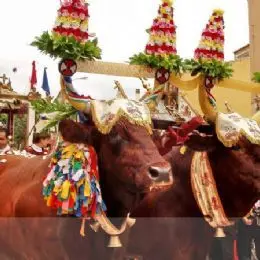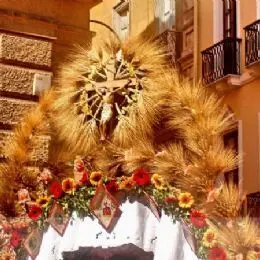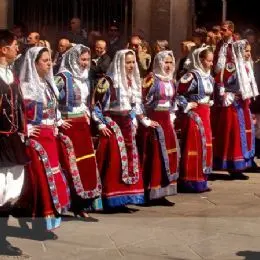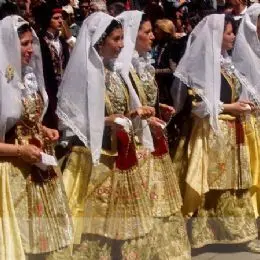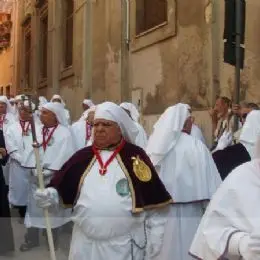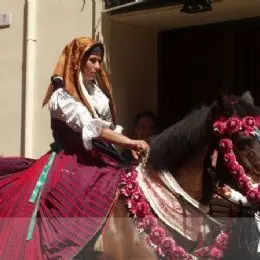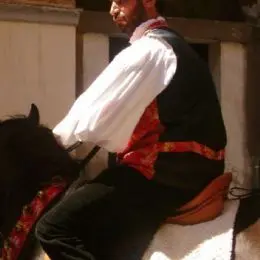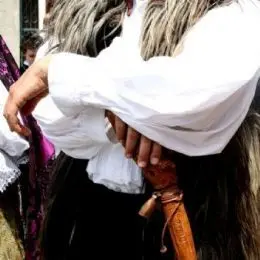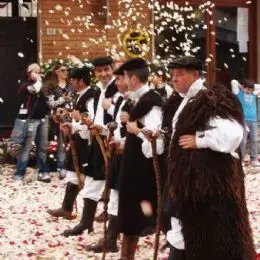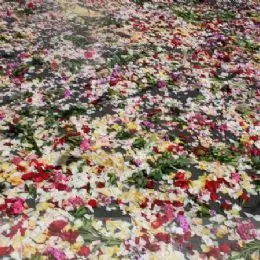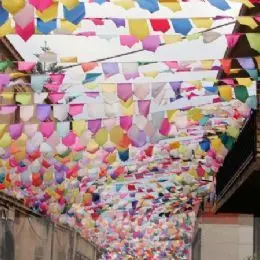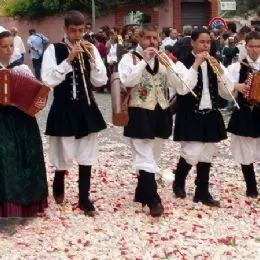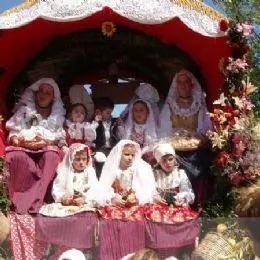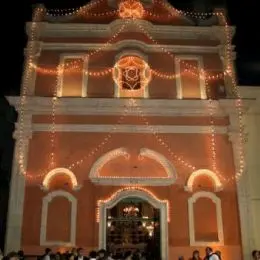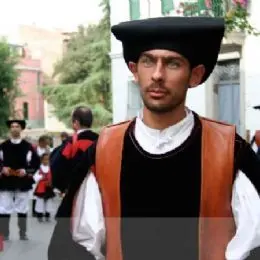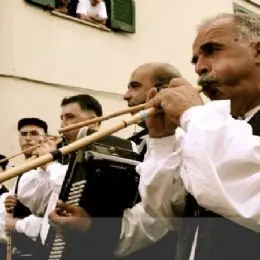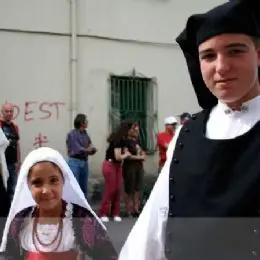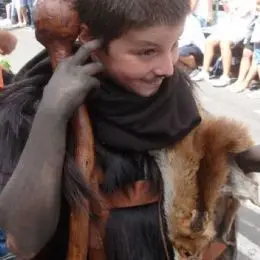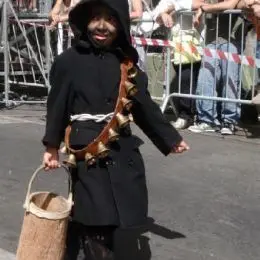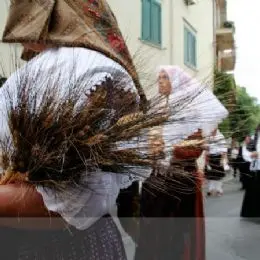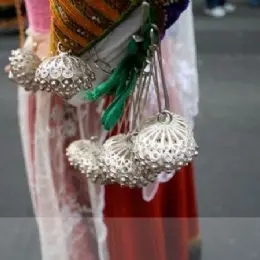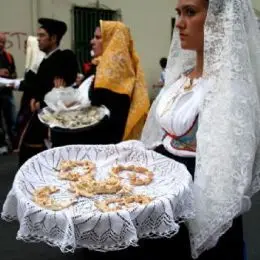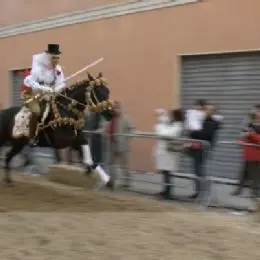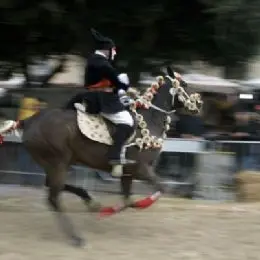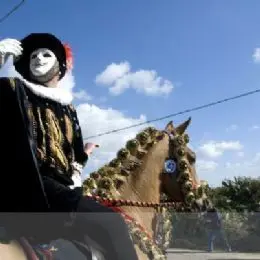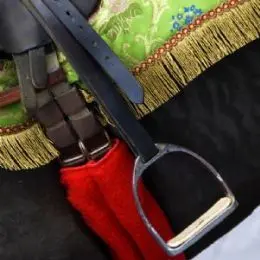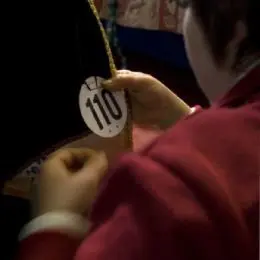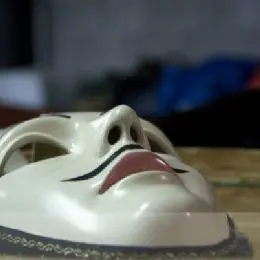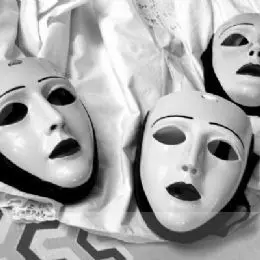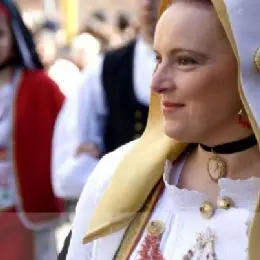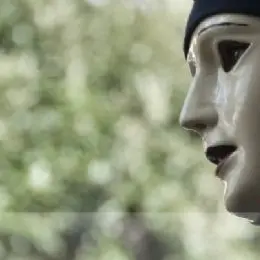Parties and festivals in Sardinia
In Sardinia every year there are about 1000 religious and secular celebrations , which still today testify to the very ancient and varied Sardinian traditions. Participating in these festivals means immersing yourself in an ancient culture to discover unknown sounds and harmonies, dances with rich traditional costumes, timeless poetic competitions, wild horse races, folkloric parades with precious and colorful clothes of others times.
Here are some of the most important events in Sardinia.
Feast of Sant'Efisio in Cagliari
On 1 May the festival dedicated to Sant'Efisio is celebrated in Cagliari , an ancient rite that has been repeated since 1656, the year in which the city of Cagliari, exhausted by four years of plague, expressed a vow to the Saint: he promised a procession in the places of his martyrdom if the epidemic had ceased. The contagion disappeared and the population, since then, has always kept their commitment.
The sumptuous procession accompanies the statue of the Saint on the way from the Church of Sant'Efisio in Cagliari to the village of Pula, the place of martyrdom, 30 km away. The procession is opened by the characteristic traccas , carts pulled by oxen decorated with carpets, flowers and tools; followed by knights and costumed groups from all over Sardinia, who recite and sing traditional prayers. Sounds of launeddas accompany the slow walk of the Saint and petals of red, pink and yellow roses cover the granite slabs of the Via Roma with the characteristic ramadura like carpets.
After the town procession, the procession sets off towards Nora , where it arrives the next day; arrived in Nora , the statue of the saint remains exposed to the devotion of the faithful in the small church on the beach of Pula , where religious services are celebrated. Finally, on May 4, the procession returns to Cagliari, and the statue of the saint returns to the Church of Sant'Efisio in the Stampace district.
Sagra di sant 'Efisio
Faradda de li candelieri in Sassari
Of all the festivals that take place in the province of Sassari , that of the Candelieri is certainly the most heartfelt . It is celebrated on August 14 to keep faith with a vow made several centuries ago to the Virgin of the Assumption who warded off the plague that struck Sassari in 1582. The "faradda" (descent) consists of a parade of 9 wooden candlesticks , whose weight varies from 200 to 400 kg, carried on the shoulders of eight bearers who dance supporting the heavy candlesticks through the streets of the historic center, accompanied by the sound of flutes and drums, up to the church of Santa Maria di Betlem, where sacred rites will be celebrated.
The Sardinian Cavalcade in Sassari
The Sardinian Cavalcade is the most important festival of the spring period , and is held in Sassari on the penultimate Sunday of May. It is a multicolored gathering of horses, riders and figures dressed in traditional costumes from all regions of the island. Over 3000 participants parade through the streets of the center, while the riders perform spectacular carousels and acrobatic performances (the so-called pariglie), accompanied by traditional songs and dances performed by folklore groups until late at night.
The first Sardinian Cavalcade was celebrated on April 20, 1899 on the occasion of the visit of Umberto I and Margherita di Savoia, who came to Sassari for the inauguration of the monument to Vittorio Emanuele II. Since then, the event has been repeated on several special occasions and has been so successful that since 1951 it has become an annual event.
S'Ardia in Sedilo
To celebrate the cult of San Costantino Imperatore, Sedilo hosts the Ardia on 6 and 7 July (from the dialect word "bardiare", which means "to stand guard while turning"), an unbridled and wild horse race disputed by dozens of riders. The figure of San Costantino is represented by sa prima pandela, a jockey carrying a yellow banner; at his side are sa segunda pandela and sa third pandela, respectively with a red and a white banner, which have the task of protecting Saint Constantine from the other knights who, in a wild race, will try to overtake him. The race is punctuated by the echo of the shots of selected riflemen and the shouting of the crowd.
Festival of the Redeemer in Nuoro
It is the most typical festival of Nuoro , and is held in the last week of August. Its importance is due not only to the spectacular parade of costumes from all over the island (which takes place on the Saturday before the actual party), but above all to the religious part of the event, which is held outdoors: mass, under the gigantic statue of the Redeemer on Mount Ortobene and the procession, which takes place around the top of the mountain and which gives the visitor moments of extraordinary charm, under the gaze of a panorama of indescribable beauty.
Feast of the Redeemer in Nuoro
The rites of the Holy Week in Sardinia
Easter is one of the most heartfelt celebrations in Sardinia, and in the days of Holy Week that precede it, events and rites of considerable interest can be found in many cities of the island. The richest and most evocative celebrations are those that can be found in Cagliari, Alghero, Castelsardo and Iglesias .
In Cagliari , for Good Friday, the procession of the Mysteries is held. The brotherhoods carry in procession seven wooden statues, the work of the seventeenth-century sculptor Giuseppe Antonio Lonis, in a path that touches seven churches in the historic center, symbol of the seven stations of the Via Crucis. It is also worth attending "S'incontru" , the ceremony on Easter Sunday, when the statues are made to make a triple bow amid the applause of the crowd and the costumes of the officiants and choristers mark the processions in black and white.
The processions of the "Setmana santa de l'Alguer" unfold in the historic center of Alghero , an ancient rite that unites Italian and Catalan brotherhoods: representatives from Catalonia come every year to pay homage to the seventeenth-century wooden simulacrum of the Crucifix (Lo Sant Crist de la Misericòrdia), the Christ of Alicante kept by the Confraternity of the Gonfalone in the church of the Misericordia. The most evocative moment is that of Good Friday, when with the "Desclavament", a long procession of faithful with torches in hand that parades behind the crucifix, the rite of the deposition of Christ from the Cross is celebrated. The evening ceremony is preceded, in the morning, by the procession of women dressed in black who depart from the church of San Francesco and follow the statue of the Virgin of Sorrows.
Among the most evocative rites is that of Castelsardo, the "Lunissanti", that is the "Holy Monday" in the Gallura variant of the Sardinian. It is a procession, called the procession of the mysteries, which takes place in the light of torches up to the Abbey of S. Maria a Tergu: the brothers, dressed in a white dress and a conical hood, open the procession, accompanied by the three choirs and from the ten Mysteries. It is here that you can hear "attitu", the traditional Sardinian funeral song. The rites also continue on Thursday, with the procession in which one of the oldest wooden statues on the island is carried, and on Friday, with the deposition of Christ from the cross.
The rites celebrated in Iglesias are equally impressive: the statue of Christ is decorated with Mediterranean flowers and essences such as laurel, rosemary and lavender, and the “del Descenso” procession, on Good Friday. Very touching is the procession of S'Incontru, the meeting between the Risen Christ and the Madonna on Easter day in Orosei and Oliena (NU).
Race of the Scalzi in Cabras (Oristano)
On the first Saturday of September the Corsa degli Scalzi is held in Cabras , in the province of Oristano . The protagonists are a group of young people who, dressed in white habit, carry the statue of S. Salvatore running barefoot to the sanctuary of the homonymous village.
Carnival in Sardinia - Sartiglia, Mamoiada
During the Carnival period, in the month of February, parades of masked balls and displays of allegorical floats are held throughout the island. In Cagliari the Carnival processions are cheered up by historical masks and the celebrations close on Holy Tuesday with the stake in which Ciancioffali, the rag doll, is burned. Also very beautiful are the parades of Tempio Pausania , where the effigy of “King George” is burned, of the Guspinese Carnival , with the traditional masked waders, of S an Gavino Monreale , of Iglesias , of Santu Lussurgiu and the carnival of Bosa . In Santa Teresa di Gallura the carnival is instead celebrated underwater.
The most spectacular festival is the Sartiglia (whose name derives from the Castilian "sortija" which means "ring") which is held in Oristano on the last Sunday of Carnival and is repeated on Shrove Tuesday. It is a rite to propitiate the good harvest of the year that has just begun. It is an equestrian carousel of Catalan origin that has been running for over five hundred years in via del Duomo, in the historic center of the city. The capocorsa (su compidori), dressed in a very particular costume, with mask and top hat, parades on horseback through the streets of the city flanked by two knights (su segundu and su terzu). Followed by a large group of knights, they give life to an unbridled gallop race with the aim of piercing a pierced silver star with the sword, hanging from a green ribbon placed in the center of via Duomo, at the height of the Cathedral. From the number of stars impaled, the auspices for the harvest of the new year will be drawn.
Sartiglia of Oristano 2009 edition
The most austere Carnival is that of the Barbagie area. In these countries the carnival is represented by tragic and ancestral figures , dressed in animal skins and with wooden masks with dark and frightening features: in Ottana the Merdules , with masks with long noses, and the Boes , with masks of bovine features and clothes of sheep skins, in Orotelli the Thurpos . Particularly evocative is the Carnival of Mamoiada , where the Mamuthones parade with bowed heads, figures that symbolize the vanquished, masked and dressed in shepherd's clothes with a cluster of cowbells hanging from the back, around which the Issocadores dance, symbolizing the winners and who they try to catch them using laces.
